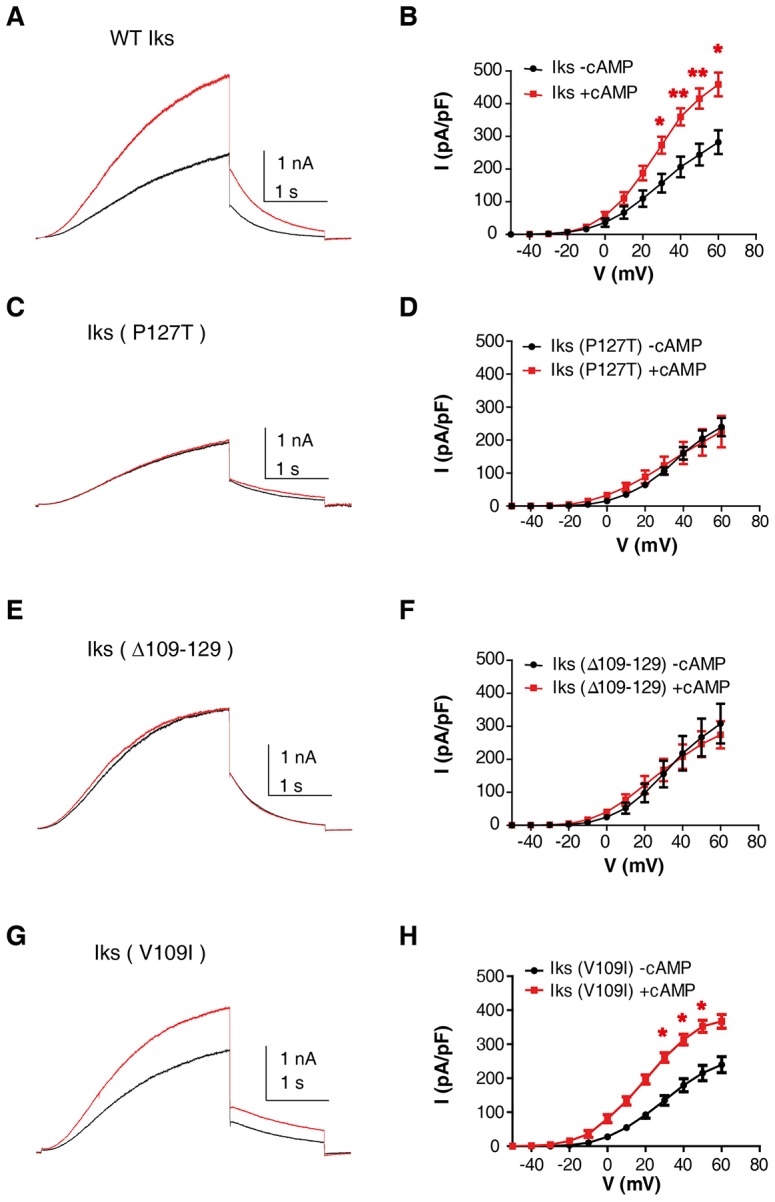Fig. 4.

P127T LQT5 mutation and Δ109–129 deletion at the KCNE1 distal C-terminus suppress the cAMP-mediated upregulation of IKS current. Representative current traces recorded from CHO cells co-expressing WT KCNQ1+WT yotiao and WT KCNE1 (A), KCNE1 P127T (C), KCNE1 Δ109–129 (E) and KCNE1 V109I (G). Cells were held at −90 mV and stepped to +30 mV for 3 s and then repolarized to −40 mV for 1.5 s. Cells were recorded in the absence (black traces) or presence (red traces) of 200 µM cAMP+0.2 µM okadaic acid. Current–voltage relationships of WT KCNQ1+WT yotiao and WT KCNE1 (B) or KCNE1 P127T (D) or KCNE1 Δ109–129 (F) or KCNE1 V109I (H). Voltage was stepped for 3 s from −50 mV to +60 mV in 10 mV increments followed by repolarization to −40 mV for 1.5 s. Red and black curves represent recordings with or without cAMP+okadaic acid in the patch pipette, respectively. (n = 6–7). Above +30 mV, the WT IKS and, above +20 mV, the KCNE1 V109I current upregulation induced by cAMP+okadaic acid were significant. *P<0.05, **P<0.01.
